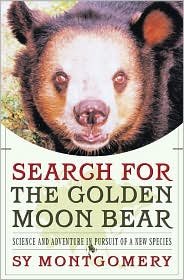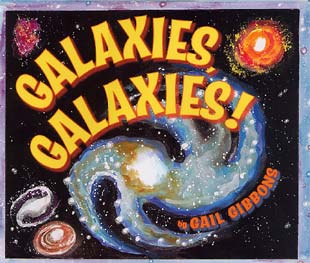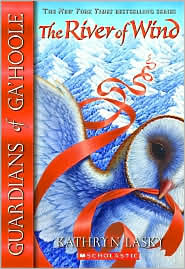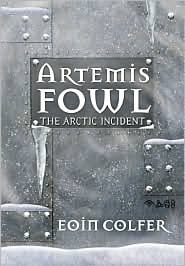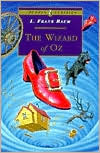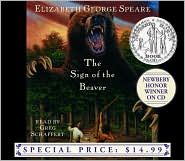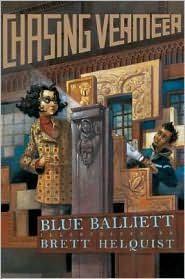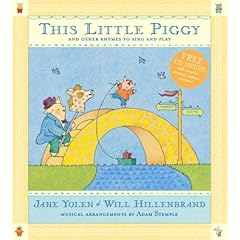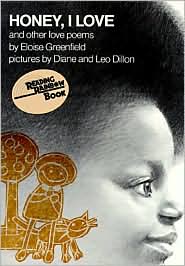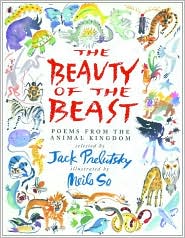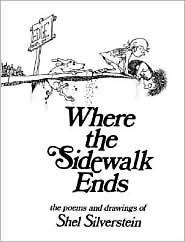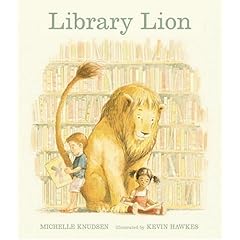 Bibliographic Information:
Bibliographic Information:Title:
Elijah of BuxtonAuthor:
Christopher Paul CurtisIllustrator:
Publisher: Scholastic, Inc.
Publication Date: August 2007
ISBN:
9780439023443Plot Summary:Elijah is the first generation of free-born members of his family. Escaping the oppression of the pre-Emancipation Proclamation and pre-Civil War torn United States, Elijah's family escaped to an established free-black community in Canada. The book focuses on events in Elijah's life - attending school, doing chores, fishing, and playing with his friends. Elijah experiences growing up free in a settlement of former and escaped slaves and he is just beginning to understand what that means when the local "preacher" steals money that is being saved to purchase the freedom of others trapped in the U.S. Elijah embarks on a mission to return the funds to their rightful owners and crosses into the prejudice ridden United States.
Critical Analysis:From the author of
Bud, Not Buddy and
The Watsons Go to Birmingham - 1963 comes another award winning novel describing the trials and tribulations of young Elijah, a freed slave who lives in a free-black community in Canada in 1859. Elijah is known as the baby who threw up on famous African American and former slave, Frederick Douglass, and he carries with him throughout the novel a view of the importance of himself and his people.
In this pre-Emancipation era, freedom is cherished. Every slave who makes it to Buxton is greeted by the tolling of the Liberty Bell atop the schoolhouse, repeated 20 times. Buxton, Ontario, Canada was an actual stop along the Underground Railroad and was founded as a community for freed or runaway slaves by an abolitionist.
This book takes a candid, yet fictitious, look at the every day life and events of a twelve year old child. Elijah attends school but his teacher is also the Sunday school teacher so in the words of Elijah, "the man is on you like a tick." (p. 78) Elijah struggles with growing up; his mother claims he is fra-gile but as Elijah has experiences including revealing the death of another member of the community's husband, Elijah believes he is growing up and becoming less fra-gile; his mother acknowledges his maturation, "What you done was real growned, son!" (p. 200)
However Elijah is also young and he makes the mistakes of youth. When describing a situation in which the schoolteacher attempted to explain the saying familiarity breeds contempt, Elijah slips into the vernacular of the day and calls himself and his classmates "little nigg-"
(p.96) although his parents have taught him that it is a word of hatred and a sign of ignorance. Although the lesson didn't stick when the schoolteacher attempted to teach the students about respecting one's elders, when Elijah uses this term around Mr. Leroy, Elijah learns the lesson and it sticks. Mr. Leroy belts Elijah and then explains, "You think it ain't choke up with the same kind of hate and disrespect it has when
they say it? You caint see it be even worst when
you call it out?" (p. 99) I found this particular chapter to be very interesting especially in light of recent events regarding this same word and local schools. I think that the author would argue that Mr. Leroy's argument is his own - the word that is derogatory is even more hateful than when another says it. I am very tempted to read aloud this chapter and the previous to demonstrate just that fact to students or patrons.
Finally Elijah is faced with a coming of age issue when Mr. Leroy kidnaps him, taking him to Detroit in an attempt to catch up with the Preacher who has stolen several thousand dollars earmarked for the purchase of Mr. Leroy's family's freedom. The Preacher shoots the accompanying Buxton man who is supposed to protect the money and gambles it, but Mr. Leroy and Elijah track the Preacher down. Mr. Leroy dies of a heart attack and Elijah is faced with continuing on and finding the Preacher. Elijah does find Preacher, but he also discovers a family of chained, escaped slaves, one named Mrs. Chloe who laughs upon discovering she is but one hour from freedom in Canada. Elijah leaves Mrs. Chloe, her husband, Kamau, their daughter Hope, and two other slaves and attempts to get help from others but there is none. Elijah almost returns to Buxton alone, but he feels compelled to attempt to help Mrs. Chloe and he returns to her and the others in the barn. At that moment, Elijah tries to read the situation as an adult would, "I took anotehr deep breath so there waren't gonna be no backing off from talking growned, which when you look at it seems to be a powerful lot like lying." (p. 331)
At the end of the book appears a two page summary of information about Buxton and the site that the author visited. He encourages readers to visit this location, with its hidden Liberty bell (that was enclosed in a bell tower when the Buxton church was sold) and it history and to open a discussion about these events. If I ever get the chance, I believe I will visit Buxton and see history come to life!
Editorial Reviews:
From Barnes & Noble
As a first-generation freeborn black, 11-year-old Elijah Buxton had no direct experience with slavery. That changes, however, when a thief steals money set aside for freeing a friend's enslaved family. Elijah sets off rapidly in pursuit, leaving behind his Canadian home and crossing into dangerous American territory, where he encounters terrifying evidence of the grievous human cost of slavery. History is made palpable in this novel by Newbery Medal winner Christopher Paul Curtis.
The New York Times - Bruno Navasky
Floating up like a bubble through layers of history, buoyed with hope and comic energy…Elijah of Buxton tells the story of Elijah Freeman, the first freeborn child in the historic Elgin Settlement, a village of escaped slaves in Canada…As in his previous novels, Curtis is a master at balancing the serious and the lighthearted: as Langston Hughes said of the blues, "not softened with tears, but hardened with laughter." He has already received a Newbery medal and an honor for two novels rooted in the experience of black Americans: "The Watsons Go to Birmingham--1963 and Bud, Not Buddy. His latest book is another natural award candidate and makes an excellent case, in a story positively brimming with both truth and sense, for the ability of historical fiction to bring history to life.
Publishers Weekly
Elijah Freeman, 11, has two claims to fame. He was the first child "born free" to former slaves in Buxton, a (real) haven established in 1849 in Canada by an American abolitionist. The rest of his celebrity, Elijah reports in his folksy vernacular, stems from a "tragical" event. When Frederick Douglass, the "famousest, smartest man who ever escaped from slavery," visited Buxton, he held baby Elijah aloft, declaring him a "shining bacon of light and hope," tossing him up and down until the jostled baby threw up-on Douglass. The arresting historical setting and physical comedy signal classic Curtis (
Bud, Not Buddy), but while Elijah's boyish voice represents the Newbery Medalist at his finest, the story unspools at so leisurely a pace that kids might easily lose interest. Readers meet Buxton's citizens, people who have known great cruelty and yet are uncommonly polite and welcoming to strangers. Humor abounds: Elijah's best friend puzzles over the phrase "familiarity breeds contempt" and decides it's about sexual reproduction. There's a rapscallion of a villain in the Right Reverend Deacon Doctor Zephariah Connerly the Third, a smart-talking preacher no one trusts, and, after 200 pages, a riveting plot: Zephariah makes off with a fortune meant to buy a family of slaves their freedom. Curtis brings the story full-circle, demonstrating how Elijah the "fra-gile" child has become sturdy, capable of stealing across the border in pursuit of the crooked preacher, and strong enough to withstand a confrontation with the horrors of slavery. The powerful ending is violent and unsettling, yet also manages to be uplifting. Ages 9-12. (Oct.)Copyright 2007 Reed Business Information
Children's Literature
Christopher Paul Curtis knows how to write characters so engaging and believable you want to meet them in person. In fact, after reading his books, you feel like you have. From the author of award winners, The Watsons go to Birmingham 1963 and Bud, not Buddy, comes another novel with heart and meaning wrapped in rollicking humor. Readers will slip into the story as they, along with eleven-year-old Elijah, assume a life of freedom, but this is the 1850's and slavery still exists in America, alarmingly close to the freed slave community of Buxton, Canada. Helping people escape from slavery is a deadly business, hardly a task for the fragile Elijah. His claim to fame is being the nervous baby who threw up on Frederick Douglas. He is scared to death of snakes and is taken in by a colorful con-artist called the Preacher, but the kid has heart, a sense of responsibility, and a feeling of what is right and wrong. He witnesses death and learns grisly truths, including the idea that giving up a child for the sake of freedom may well be the greatest gift. Elijah's heroism is believable, growing from almost accidental, to faltering, to determined, albeit limited, saving one tiny soul rather than a whole group, which is all that can be expected of a child. Indeed, giving a child the opportunity to learn the horrors of the past but understand the hope of the future is the most we can ask of a character—and of an author.
Kirkus Reviews
Eleven-year-old Elijah Freeman is known for two things: being the first child born free in Buxton, Canada, and throwing up on the great Frederick Douglass. It's 1859, in Buxton, a settlement for slaves making it to freedom in Canada, a setting so thoroughly evoked, with characters so real, that readers will live the story, not just read it. This is not a zip-ahead-and-see-what-happens-next novel. It's for settling into and savoring the rich, masterful storytelling, for getting to know Elijah, Cooter and the Preacher, for laughing at stories of hoop snakes, toady-frogs and fish-head chunking and crying when Leroy finally gets money to buy back his wife and children, but has the money stolen. Then Elijah journeys to America and risks his life to do what's right. This is Curtis's best novel yet, and no doubt many readers, young and old, will finish and say, "This is one of the best books I have ever read." (author's note) (Fiction. 9+)
Connections:-Read the chapters 6 and 7 aloud and have students discuss what "familiarity breeds contempt" means to them and to the characters in the novel. Also discuss the power of words.
- Use this novel in conjunction with other Underground Railroad stories to discuss the motivation and accomplishment that occurred in assisting slaves to escape.
